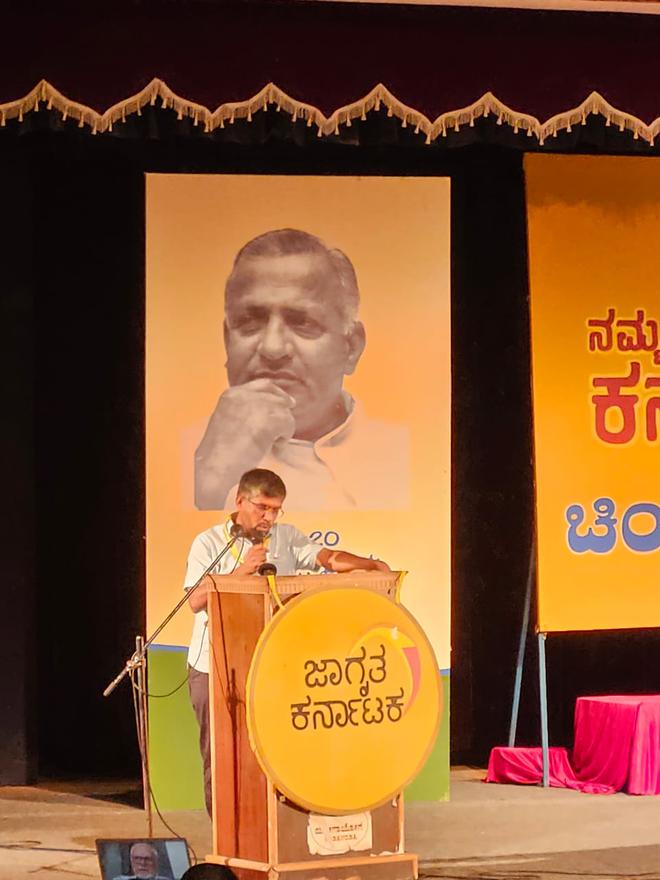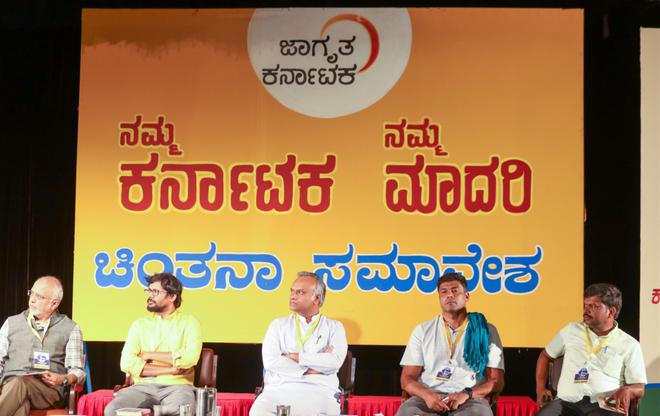Is there a Karnataka mode of development? Economic development with equitable distribution of resources, communal harmony and decentralisation of power, in which the State was a pioneer, broadly make for the three pillars of the ‘Karnataka model of development’, according to political analyst A. Narayana, who is a professor at Azim Premji University.
He delivered the keynote address at ‘Namma Karnataka, Namma Madari’ (Our Karnataka, Our Model), a symposium organised by Jagruta Karnataka on the occasion of the 102nd birth anniversary of former chief minister D. Devaraj Urs.

“These three pillars are incomplete, and there are vulnerabilities. While we have achieved redistribution of resources to some extent, we need to make the economic model of the State structurally more equitable. With the advent of Hindutva politics, communal harmony in the State has become very vulnerable. We have ensured that no party can capture power without a broad coalition of communities and groups. Even as we are a pioneer in Panchayat Raj as well, we need to empower people to flourish despite their caste identities,” Dr. Narayana said.
Prof. Yogendra Yadav added a fourth dimension, saying a model needs to also be ecologically sustainable in the long run.
Nature of opposition
Revenue Minister Krishna Byre Gowda said the main challenge to articulating a ‘Karnataka Model’ and taking it to the wider world was the polarised nature of the State’s politics.
“Unlike in neighbouring Kerala and Tamil Nadu, where there is a bipartisan consensus and ownership of the model adapted by the State ensuring consistent messaging and continuity in governance, the nature of politics in Karnataka does not make room for such a consensus. With BJP as our principal opposition, which does not believe in decentralisation, intervention by the State to ensure equitable redistribution of resources and in communal harmony, how do we articulate a Karnataka Model?”
Speaking of the fiscal challenges faced by the State in articulating and implementing the ‘Karnataka Model’, he said the five guarantee schemes together make for a form of Universal Basic Income, which is being provided to cushion the people from the blow of inflation, high indirect taxes and the dire straits of the economy. “But at one end, there is over-centralisation of taxation, and our share of the devolved taxes is reducing every year. At the other end, all welfare schemes are being mocked as revdi culture,” he said.

Look beyond Bengaluru to reduce regional disparity
Rural Development and Panchayat Raj Minister Priyank Kharge said equal stress must be given on developing social infrastructure, like health and education facilities, while prioritising a model of economic development suited for the region.
“There is immense diversity in Karnataka. We need to harness this diversity and plan specific industries in line with the special strengths of a particular region. More than anything else, we need to look beyond Bengaluru, failing which the State will continue to suffer from regional disparity,” he said.







